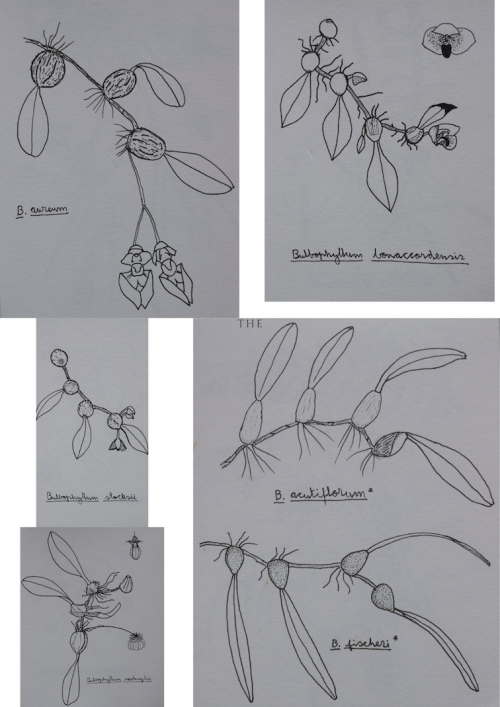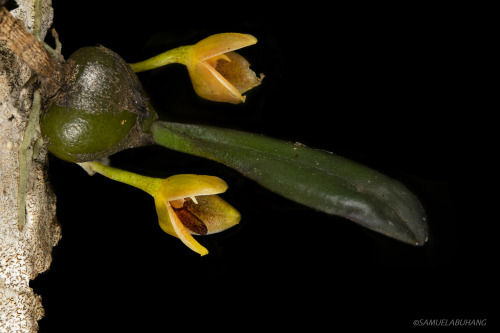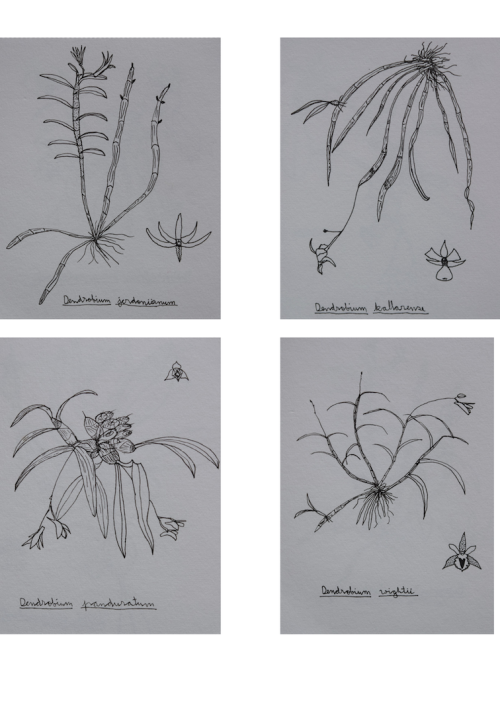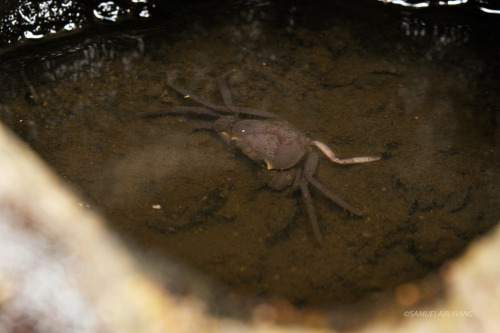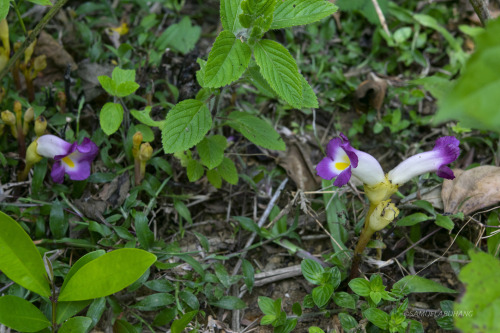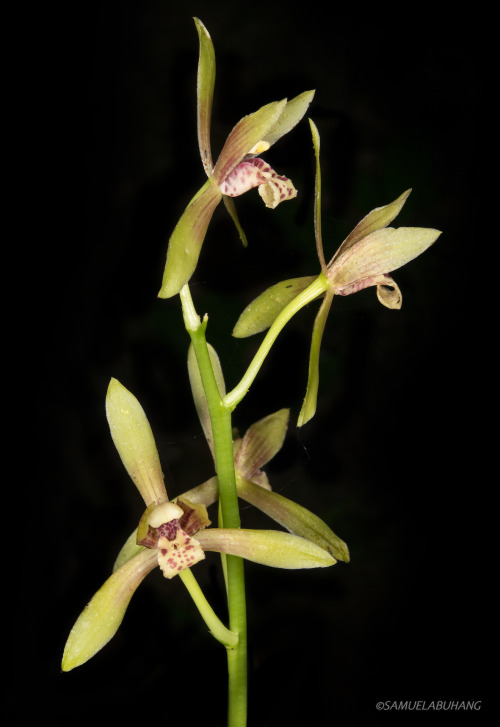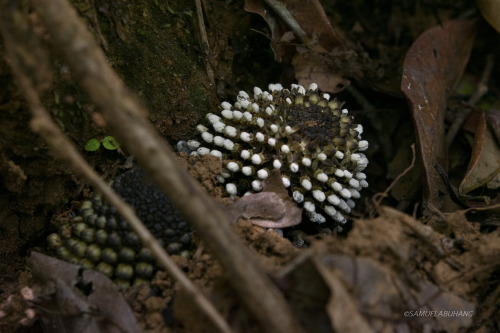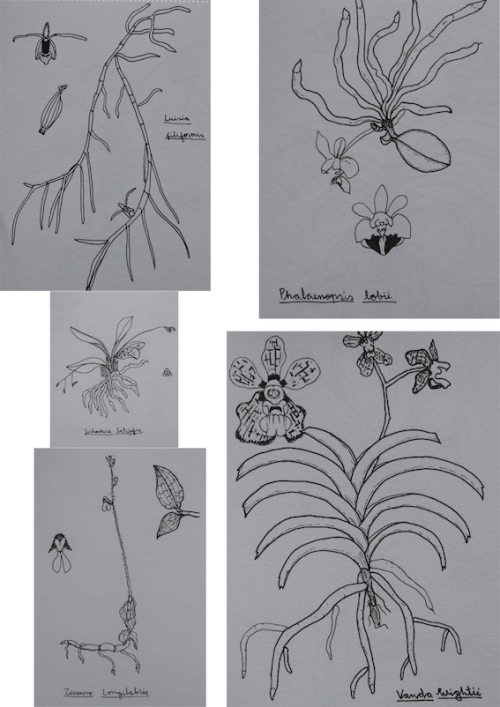A botanist’s paradise
Guest Post by Abu Hang Samuel.
Editor’s note: At Gurukula Botanical Sanctuary we receive many visitors who are botanists or botanically inclined, but it is rare to receive a young botanist who is self taught and passionate about conservation and plant taxonomy, especially one who has written a book by the age of 19 and contributed to the conservation of plants of a region. One such young man turned up a few months ago, referred to us by a mutual friend who’d been a student on one of our long-term courses many years ago. Struck instantly by the depth of his knowledge and interest, we set him on a little project to list the wild orchid species on the land, and along a forest trail, and also to check for errors in our own labelling system. He did all three with quiet grace and tenacity. We also asked him to write a blog post. He did this also with the same quiet grace, and quickly. Here it is. Please meet orchids and other species of plants (and also animals) through the words, drawings and photos of Abu Hang Samuel, the young naturalist who visited Gurukula Botanical Sanctuary earlier this year.
***
My trip to the sanctuary, albeit brief, was filled with exciting finds from the moment I stepped through the plant themed gates at the entrance.
My goal for the trip was simple: to see as many orchids as I could. I was very graciously familiarised with the place, and being an orchid enthusiast, I quickly made my way towards the orchidarium. Although my visit was in winter, not the best time for orchid blooms,with such a large collection of orchids, there were bound to be some flowering. Some of my favourites were Western Ghats endemics like Dendrobium jerdonianum and Bulbophyllum indicum, the former with its bright orange flowers and the latter with its large solitary, balloon-like inflorescence. I am very happy that these species are being cultivated there, which safeguards their future. I spent my time going through the rows of mounted and potted orchids, practising my drawing skills and making illustrations of species that were in flower.
I had the good fortune of accompanying some school students who have been regulars at the sanctuary on a walk into the surrounding reserve forests. We were accompanied by the local guides, the guardians of these forests if you will, who took us through some beautiful forests of Syzygiums, giant Ironwood, massive Ficus and a variety of other trees. I am not well informed about trees, so I walked along with the students, who, impressively, could identify every tree.
We walked through the forests, thickets, marshes, crossed streams and rivers to reach a beautiful strangler fig, which the others had a great time climbing. During this walk, I documented an epiphytic orchid, Bulbophyllum stocksii in bloom, which was a great find. The highlight of that day was a very special arthropod. I was taking a break with the guides when a hollow in a nearby tree trunk caught my eye. Hoping for a tree frog, I peered into the dark and moved a few dead leaves. To my astonishment, I found a shed crab exoskeleton, and looking closer with the torch from my phone, I spotted a small purple crab with unusually long legs. This was an arboreal crab, Kani maranjandu, the only species in the genus which lives solely in such tree holes, more technically, phytotelmata which can be defined as small water filled cavities in terrestrial plants like tank bromeliads or tree hollows. The life cycle of this species is completed in an arboreal setting, on and inside trees, never descending to the ground or migrating to water bodies or places where you’d normally find crabs. It was only described in 2017. I was ecstatic about this find and immediately started photographing, which took some manoeuvring to get the right frames and lighting, before the crab quickly buried itself. I replaced the dead leaves inside after I was done and bid farewell to this rare crustacean I was lucky to have found.
A familiar species I found in bloom with bright purple and yellow flowers was Christisonia tubulosa, a root parasite from the family Orobanchaceae, one I had seen six years back on a trip to Idukki (a trip also to see orchids).
On another forest walk, this time with the local guides Mr. Sajji and company, we went to a beautiful stream and through some forests looking for orchids. We didn’t find many in terms of epiphytic species, but as we were heading back through a stand of young saplings shadowed by giant trees nearby, I spotted a slender pale stalk near the path by the base of a tree root. Bending down, I immediately recognised it as Epipogium roseum, better known as a ghost orchid because of its characteristics of having no chlorophyll, being completely dependent on mycorrhizal fungi for nutrition, along with its pale appearance and ephemeral flowering habit, with flowers barely lasting for a day or two at most. This was another species on my orchid bucket list I wanted to document in the wild. I had never expected to stumble upon it on my first visit to Gurukula! This just goes to show the diversity in the surrounding forests.
We finally headed back out of the forest. On the way back, I found another terrestrial orchid in bloom, this time a more familiar species, Cymbidium ensifolium, of which I also got some great photos. While I was photographing the Cymbidium, I noticed a dark stalk sticking out of the ground. I quickly realised it was another myco-heterotrophic orchid, Aphyllorchis montana, which unfortunately had finished flowering and now bore seed pods in development.
Besides my focus on orchids, the evenings and early mornings brought out some rather adorable denizens of the region; frogs. I stumbled upon four species. The first was the golden frog (Hylarana aurantiaca) which hung out on bromeliads and water lily pads. They were quite patient with my attempts to photograph them and let me get some great shots.
The next character was a tiny one; the glandular bush frog (Raorchestes glandulosus) which I found on an orchid I was examining. It kept jumping around before finally settling down on a leaf where I got some not so great shots. I found another species of bush frog (Raorchestes anili) which was sitting on the doorframe of a restroom. I carefully took it outside, took some photos, and let it go. The final frog was from the genus Micrixalus, commonly called torrent frogs or dancing frogs, as the males of some species have an elaborate dance like flexing and flicking of their hind limbs in a show of territory or to attract a mate. The one I found was a small, dark individual that sat calmly on a rock while I pointed my giant camera setup with flashes at it. Got some decent photos, but the rock it was sitting on didn’t prove to be the best looking background and couldn’t bring out the best of the frogs’ details.
Other herpetofauna I found were a couple of lizards, namely a few individuals of Elliot’s forest lizard (Monilesaurus elliotii) and some lovely southern flying lizards (Draco dussumieri) which was a species I had wanted to see for quite some time. I also saw a beautiful cobra (Naja sp.) and a common rat snake (Ptyas mucosa) both of which slithered away at mach speed, much to my disappointment.
On the final day of my visit I went on another walk through the sanctuary’s nearby land. It is currently being restored, so it is largely left alone for natural regeneration with some planting here and there. Again, I went to look for orchids, and we did find a few, mostly seedlings of Pholidota and quite a few specimens of an Oberonia sp. which was really nice to see. It was really heartening to see the native flora slowly replacing the monocultures of tea and rubber that once covered these hills. During this walk, my guide Mr Jaimon spotted an amazing Balanophora fungosa subsp. indica just coming into flower, a species that parasitises tree roots. They are a very odd group of plants that lack chlorophyll, with peculiar floral morphologies that make them resemble mushrooms, which they are commonly mistaken for. I got some great photos of it, which brings up the number of Balanophora I’ve seen in the wild up to a measly 3 species. I hope I can bump up those numbers, maybe even get to see all the twenty three species currently accepted. Maybe too ambitious, but maybe not.
I had been meaning to visit the sanctuary ever since I first learned of it, and now that I have, it lived up to my expectations and then some. I really want to visit during the monsoon, when both flora and fauna are at their best. I will be back, in pursuit of more orchids.
Until then,
Abu Hang Samuel.
Checklist of Orchids
E: Epiphytic
C: Climber
T: Terrestrial
H: Myco-heterotrophic
Forest species
- Acanthephippium sp. ……………….T
- Aphyllorchis montana ……………….H
- Bulbophyllum stocksii ……………….E
- Calanthe sp. ……………….T
- Cymbidium ensifolium ……………….T
- Epipogium roseum ……………….H
- Gastrochilus sp. ……………….E
- Liparis viridiflora ……………….E
- Luisia sp. ……………….E
- Oberonia ……………….E
- Pholidota sp. ……………….E
- Podochilus sp. (possibly P. malabaricus) ……………….E
- Thrixspermum sp.……………….E
- Tropidia sp.………………. T
- Vanilla sp. ……………….C
Garden species: (Naturally occurring and planted species on trees included)
- Aerides sp. ……………….E
- Bulbophyllum sterile ……………….E
- Bulbophyllum stocksii ……………….E
- Bulbophyllum xylophyllum ……………….E
- Calanthe sp. ……………….E
- Cleisostoma tenuifolium ……………….E
- Coelogyne sp. ……………….E
- Cottonia peduncularis ……………….E
- Cymbidium aloifolium ……………….E
- Cleisocentron pallens ……………….E
- Dendrobium crepidatum ……………….E
- Dendrobium herbaceum ……………….E
- Dendrobium panduratum ………………. E
- Dendrobium macrostachyum ……………….E
- Dendrobium moschatum? ……………….E
- Dendrobium ovatum ……………….E
- Dendrobium sp. (salaccense?) ……………….E
- Diplocentrum sp. ……………….E
- Eria sp. ……………….E
- Gastrochilus sp.………………. E
- Liparis elliptica ……………….E
- Liparis viridiflora ……………….E
- Luisia sp. ……………….E
- Oberonia sp. (Pendulous, fan shaped leaves) ……………….E
- Oberonia sp. (Dark coloured, blade like leaves) ……………….E
- Oberonia sp. (Pendulous, long narrow leaves) ……………….E
- Pholidota sp. ……………….E
- Papilionanthe sp. ……………….E
- Podochilus sp. (cultratus?) ……………….E
- Porpax sp. ……………….E
- Rhynchostylis retusa ……………….E
- Robiquetia sp. ……………….E
- Taprobanea spathulata ……………….E
- Trichoglottis sp. ……………….E
- Vanda sp. (Either V. wightii or V. thwaitesii) ……………….E
- Vanilla sp. ……………….C
- Xenikophyton smeeanum………………. E
- Zeuxine gracilis (Accidental epiphyte and terrestrial growing amongst other ornamental plants) ……………….T
GBS land species
- Acanthephippium sp. ……………….E
- Aerides sp. ……………….E
- Bulbophyllum sterile ……………….E
- Cymbidium sp. ……………….E
- Dendrobium sp. (possibly D. macrostachyum) ……………….E
- Dendrobium sp. (Dark red stems enclosed in sheaths, possibly D. heyneanum) ……………….E
- Gastrochilus sp. ……………….E
- Hetaeria oblongifolia ……………….T
- Liparis viridiflora ……………….E
- Luisia sp. ………………E
- Oberonia sp. (brachyphylla?) ……………….E
- Oberonia sp. (Long pendulous leaves) ……………….E
- Phalaenopsis sp. ……………….E
- Pholidota sp. ……………….E
- Smithsonia sp. ……………….E
- Tainia sp. ……………….T
- Zeuxine gracilis ……………….T

